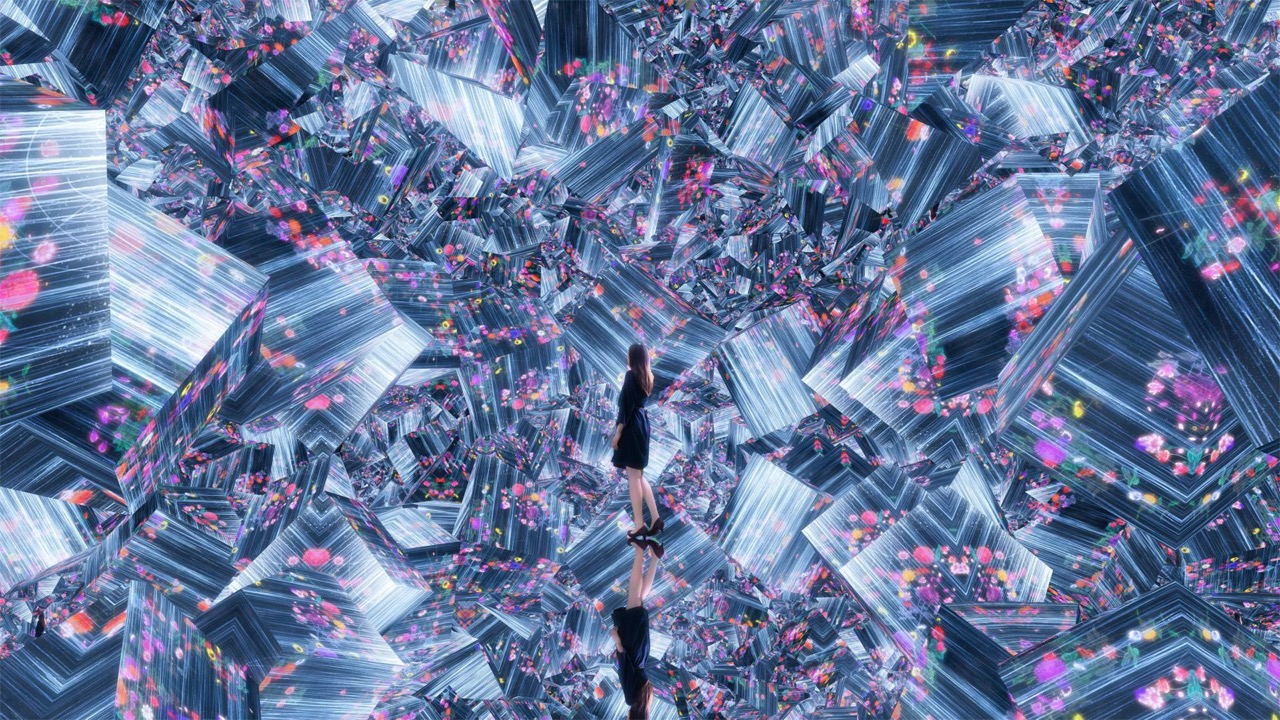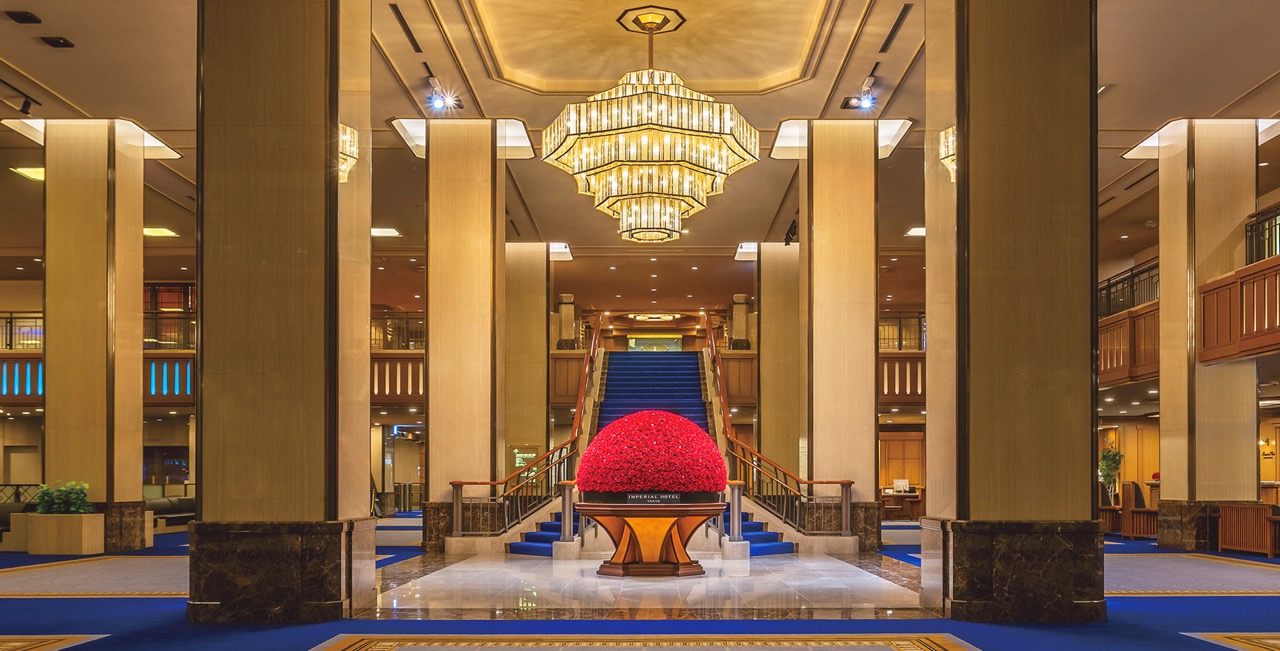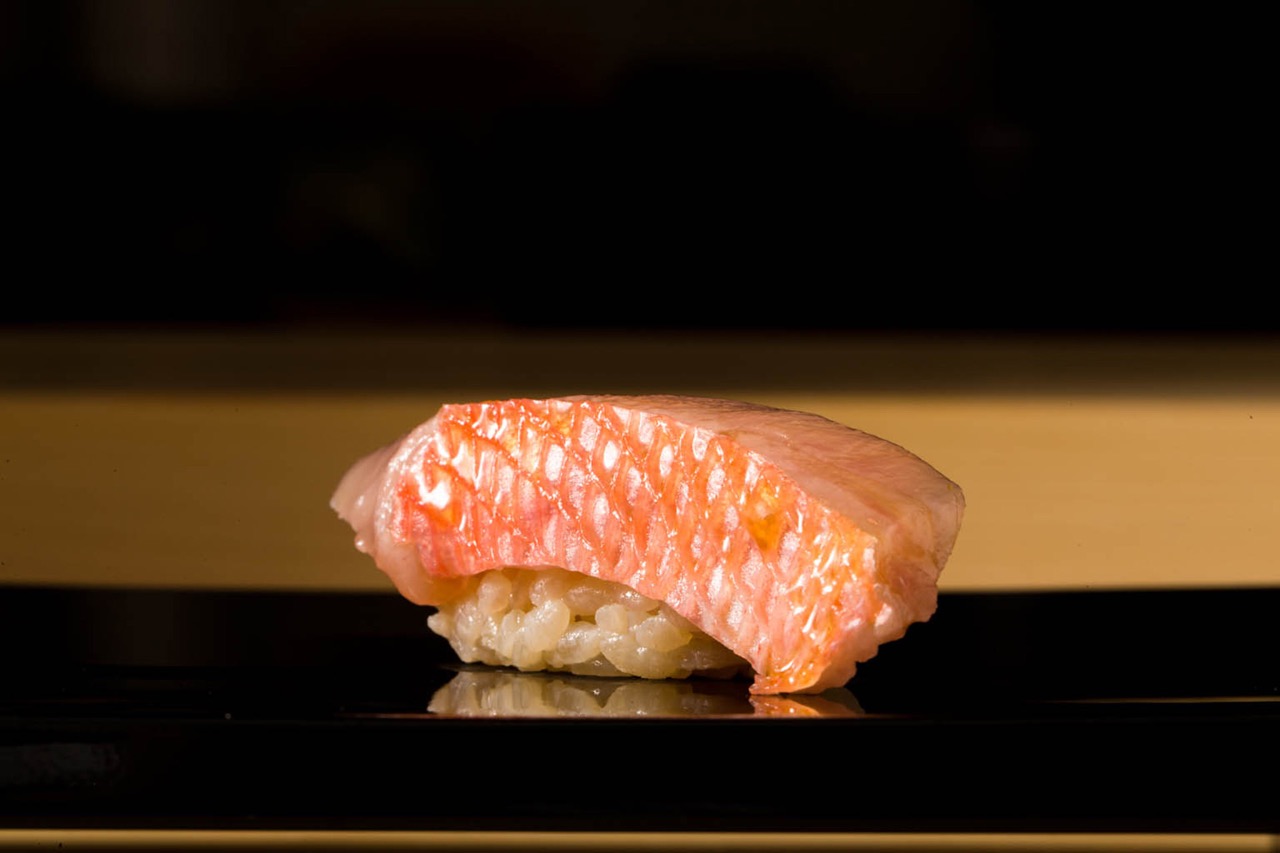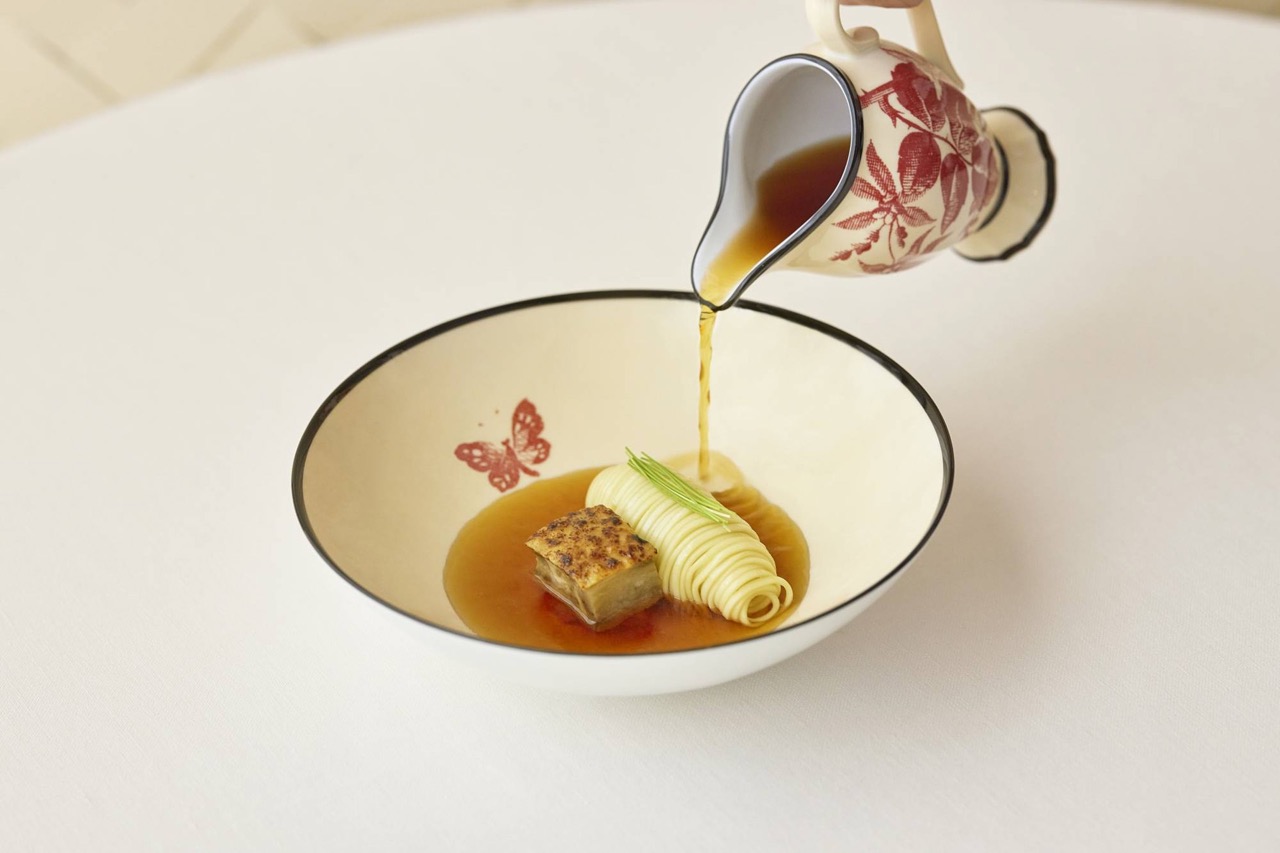STEEPED IN CENTURIES OF TRADITION YET WILDLY FUTURISTIC, TOKYO IS A FASCINATING URBAN WONDERLAND AND KALEIDOSCOPE OF CULTURE, COLOR, AND ACCOMPLISHMENT
BY AMANDA MCCOY

Vast and vibrant, Japan’s capital city dances along the junction between old and the ultra new, a place where tradition and technology saunter hand in hand. Dazzling superstructures taunt gravity while centuries old temples, steeped in tradition, rest behind soaring torii gates. The Tokyo Skytree, the world’s tallest tower and third highest structure, keeps a watchful eye over the thriving metropolis, home to dozens of distinct neighborhoods, each with its own personality and mood. Party in the Roppongi, stroll the cobbled backstreets of Kagurazaka for high fashion threads, sing late night karaoke in neon soaked East Shinjuku, visit the world’s busiest crossing in Shibuya City, and toast high end sake with scrumptious bites of nigiri in the glamorous Ginza. The city is a foodie’s Eden, boasting more Michelin starred restaurants than any other metropolis on the planet (as of last January, 203 eateries were packing at least one holy star from the tire titan). Characters are a beloved aspect of the culture here; you’ll find a number of themed bars and cafés, and just about every brand has its own dedicated mascot and they’re known to parade around the city in costume!
KNOW BEFORE YOU GO
Tokyo is the most populous city on the planet, home to 39 million people, as well as the world’s largest urban economy. It’s also one of the safest cities in the world, ranked number five in the Safe City Index 2021. The metropolis is broken up into several smaller parts, consisting of 23 special wards, 26 cities, five towns, and eight villages. Navigating the urban wonderland is relatively painless as the public transit system is fantastic; the subway is famously reliable, with average delays totaling less than one minute every year. There are 280 train stations located throughout town, so you can reach just about any corner of Tokyo with ease. Be sure to download the metro train map before you visit. Note that while there are two separate subway networks (the Metro and Toei), users with prepaid rail passes can freely transfer between the two.
Yen is the official currency, and while most hotels and restaurants will accept credit cards, it’s a good idea to carry the local currency as many smaller shops, street vendors, and stalls are cash only. Most restaurants in the city charge a small table fee (approximately the equivalent of $2 to $6), but that traditionally includes an otoshi, or light appetizer, such as a bite of tofu or cup of miso soup.
ATTRACTIONS
TSUKIJI OUTER MARKET
More than 400 shops line the colorful alleyways of this bustling open air market, lauded as one of the best places in the city to nab tasty, hyper fresh sushi and seafood for pennies on the dollar (or, more accurately, yen). In addition to fresh seafood vendors and produce stalls, there’s a surplus of lively ramen shops, tiny sushi counters, coffee houses, and artisanal goods boutiques (looking for an authentic Japanese sashimi knife? This is your spot). The best time to visit is in the morning, as many stalls will close up shop by lunchtime. Be sure to bring cash as most vendors don’t accept credit cards.
teamLAB BORDERLESS
Though the famed Odaiba location of this Guinness World Record breaking digital art museum sadly closed in summer 2022, teamLab did confirm its newest locale, set in Azabudai Hills in central Tokyo, will soon open. The bewildering, logic defying concept, originally debuted in 2018, features a dizzying array of interactive, light centric installations that play with boundaries and test the borders between self and world, and of the continuity of time. Past exhibits include Crystal World, a mystical mazelike display of falling strands of shimmering light, and the Forest of Lamps, a digital garden of Venetian glass lamps that bloom upon approach. Check the Borderless website for updates regarding the official opening. teamlab.art
MEIJI JINGU
Shrines sacred structures that serve the Shinto religious tradition have long been integral to Japanese culture, and there are an estimated 80,000 standing throughout the country, with nearly 1,500 in Tokyo alone. One of its most popular (and impressive), the elaborate Meiji Shrine was erected in 1920 to honor Emperor Meiji and Empress Shoken, credited with ushering the country into modernization, and is surrounded by a tranquil garden of more than 100,000 trees. The Inner Garden requires an entrance fee but is worth the ticket, filled with exquisite iris flower beds, scenic shaded pathways, and even a traditional tea house. meijijingu.or.jp
WHERE TO STAY

AMAN TOKYO
Tucked into the top six floors of the soaring 38 story Otemachi Tower, this all suite high rise hotel from the leading hospitality nameplate offers dizzying levels of luxury. Accommodations feature traditional Japanese design think ikebana displays, washi paper doors, and engawa platforms and boast sweeping views of the bustling capital, from the soaring skyscrapers of Shinjuku to the Imperial Palace gardens. On clearer days, guests can even peep the snow capped peak of Mount Fuji. All stays include access to the wellness center, including Japanese style bathing facilities, steam rooms, a 98 foot panoramic pool, and a state of the art gym. There are five dining options on site, including Musashi by Aman, an intimate eight seat countertop omakase experience by master chef Hiroyuki Musashi. aman.com/ hotels/aman tokyo
IMPERIAL HOTEL TOKYO

Originally erected in 1890 to accommodate the rising number of affluent Western visitors, this storied hotel, set just south of the Imperial Palace grounds, is a city institution. Its dramatic, double height lobby features massive chandeliers, rich blue and golden accents, marble surfaces, and impressive flower arrangements, while guestrooms and suites are filled with thoughtful luxuries like Ayura bath amenities, plush bathrobes, pajamas, and large glass windows that overlook the 40 acre Hibiya Park, the Palace, and Ginza neighborhood. There is a grand total of 17 bars and restaurants on site, from fine French fare at Les Saisons to Ming Dynasty delicacies at Peking (be sure to take part in the daily chanoyu, a traditional Japanese tea ceremony.) A hotel limousine service is on hand for city sightseeing, with a variety of vehicles to choose from, including Lexus’ Flagship LS and Toyota’s hydrogen fuel cell vehicle, the Mirai. imperialhotel.co.jp
WHERE TO DINE
SUSHI YOSHITAKE

is triple Michelin starred sushi spot from celebrity chef Masahiro Yoshitake recently unveiled new digs, set in a slightly larger space in the Ginza district (only slightly; he added one extra chair to his formerly seven table counter, plus the addition of a private room). Sushi is primarily served in the famed Edomae style, though the master chef does take several liberties, bending traditions to delectable effects. All seafood is chilled on blocks of ice in a classic wooden box, until it’s ready to be sliced, dressed, and served. Expect straw smoked bonito, mackerel marinated in oyster oil, tender simmered octopus, and the chef ’s special, abalone accompanied by abalone liver and uni sauce for dipping. sushi yoshitake.com
GUCCI OSTERIA TOKYO

The third installment of Gucci’s Osteria series (the concept debuted in Florence, Italy, in 2018, followed by Beverly Hills in 2020), this decadent dining destination located atop the Gucci Namiki flag ship store in upmarket Ginza marries haute couture with haute cuisine. The master chef Antonio Iacoviello helmed kitchen serves stunningly plated Italian dishes seasoned with Japanese influences. The signature “Parmigiana that wants to be a Ramen” is a must try. It’s essentially an Eastern twist on eggplant parm, featuring aubergine au gratin alongside garlic, oil, and chili soaked spaghetti, topped with a bath of aubergine broth with shio koji. A fairytale ambiance accompanies each meal, from a frock donning cat mural (a la Alice in Wonderland) to the parade of gold antique mirrors against an olive green background. gucciosteria.com/en/tokyo
GEN YAMAMOTO
Located behind a nondescript door in a narrow alleyway, this unassuming speakeasy serves some of the best cocktails in the city. It’s essentially an omakase for drinks, a chef ’s choice tasting menu of four, six, or seven libations, each superbly crafted and presented in an interesting piece of glassware alongside a flower. There are only eight seats available at the L shaped Mizunara oak bar, so be sure to book a reservation far in advance (nabbing a seat here can take months). genyamamoto.jp
